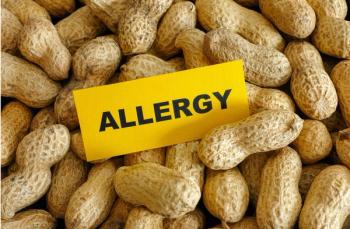
Antiretroviral Therapy: Short-Term, Earlier Interventions Show Promise
New guidelines on the use of antiretroviral therapy, together with recently published studies, highlight the benefits of early, short-term treatment on outcomes, clinical signs of the disease, morbidity and mortality, and secondary transmission.
New guidelines on the use of antiretroviral therapy, together with a recently published article in PLoS Medicine, highlight the benefits of early, short-term treatment on outcomes, clinical signs of the disease, morbidity and mortality, and secondary transmission.1, 2
The study, from a group of researchers at the University of Amsterdam, explored the risks and benefits of early yet temporary antiretroviral therapy (ART) therapy in patients with symptomatic PIV. Early treatment was defined either acutely, during primary HIV infection (PIV), or chronically, at CD4 counts as high as ≥500 cells/mm.3
Earlier observational studies showed transient treatment provided clinical benefits, including reduced viral set point, slower decline of CD4 cells, and limited viral reservoirs during the first few weeks after viral transmission. At least two clinical trials suggest that temporary treatment could delay disease progression and long-term ART initiation.3, 4
Delaying long-term treatment is important because patients are often nonadherent to the medication, increasing the risk of viral resistance.2
For this study, researchers studied 168 patients with primary HIV infection (PHI), most of whom were men who have sex with men, had a negative or indeterminate Western blot (Fiebig stage I-IV), and were symptomatic during PHI. The patients randomly either received no treatment, or 24 or 60 weeks of ART. Patients with clinical evidence of disease were randomized to one of the 2 treatment arms. Overall, 115 participants were randomized to all 3 arms; 53 to the treatment arms only.
The trial found that even 24 weeks of ART initiated during PHI temporarily lowered the viral set point by 0.5-0.8 log10 copies/ml, increased CD4 count, and deferred the need for ART during chronic HIV infection by 1.1 to 2.3 years overall, more than 3 years for the 24-week cohort and 1.8 years for the 60-week group. The median time until therapy began in the no-treatment arm was 7 months.
However, as the authors note, there are challenges in starting ART so early in the disease state when patients are emotionally upset and have a greater risk of nonadherence, which can increase viral resistance.
Another collaboration study (CASCADE) found that deferring therapy until CD4 counts dropped to <350 cells/mm3 versus starting while they were between 350 and 499 cells/mm3 led to a significantly lower risk of all-cause mortality (hazard ratio [HR]: 0.51, 95% confidence interval [CI]: 0.33-0.80).7
On the prevention side, several new studies published in the past year demonstrated significant benefits of early ART in preventing secondary infection. One of the largest was published in the
This multinational study found that infected individuals who started ART with CD4 counts between 350 and 550 cells/mm3 not only had a significantly lower risk of event/deaths (HR: 0.59, 95% CI: 0.40–0.88) than those who waited until their counts dropped below 350 cells/mm3, but also a dramatically lower infection rate in their partners (27 in the delayed therapy group versus one in the early-therapy group, HR 0.04; 95% CI, 0.01 to 0.27; P<0.001).8
Thus, the new guidelines also recommend for the first time that clinicians offer ART to all patients at risk of transmitting HIV to their sexual partners, whether hetero- or homosexual. 2
It is important that primary care physicians begin implementing the new guidelines into their practice. They may also want to consider the potential benefits of temporary ART treatment in patients with PHI.
References
1. Grijsen ML, Steingrover R, Wit FW, et al. No Treatment versus 24 or 60 Weeks of Antiretroviral Treatment during Primary HIV Infection: The Randomized Primo-SHM Trial. PLoS Med. 2012;9(3):e1001196.
2. Panel on Antiretroviral Guidelines for Adults and Adolescents. Guidelines for the use of antiretroviral agents in HIV-1-infected adults and adolescents; March 29, 2012.
3. Fidler S, Spartac Trial Investigators. The effect of short-course antiretroviral therapy in primary HIV infection: final results from an international randomised controlled trial; SPARTAC. Paper presented at: 6th IAS Conference on HIV Pathogenesis, Treatment and Prevention; 2011; Rome, Italy.
4. Hogan CM, Degruttola V, Sun X, et al. The setpoint study (ACTG A5217): effect of immediate versus deferred antiretroviral therapy on virologic set point in recently HIV-1-infected individuals. J Infect Dis. 2012;205(1):87-96.
5. Panel on Antiretroviral Guidelines for Adults and Adolescents. Guidelines for the use of antiretroviral agents in HIV-1-infected adults and adolescents. 2011;
6. Cain LE, Logan R, Robins JM, et al. When to initiate combined antiretroviral therapy to reduce mortality and AIDS-defining illness in HIV-infected persons in developed countries: an observational study. Ann Intern Med. 2011;154(8):509-515.
7. Timing of HAART initiation and clinical outcomes in human immunodeficiency virus type 1 seroconverters. Arch Intern Med. 2011;171(17):1560-1569.
8. Cohen MS, Chen YQ, McCauley M, et al. Prevention of HIV-1 infection with early antiretroviral therapy. N Engl J Med. 2011;365(6):493-505.
Newsletter
Enhance your clinical practice with the Patient Care newsletter, offering the latest evidence-based guidelines, diagnostic insights, and treatment strategies for primary care physicians.















































































































































































































































































